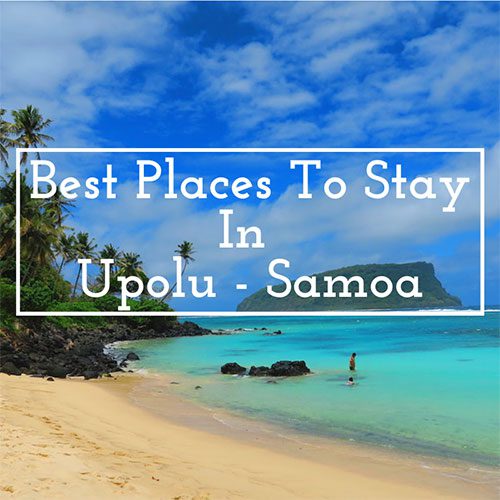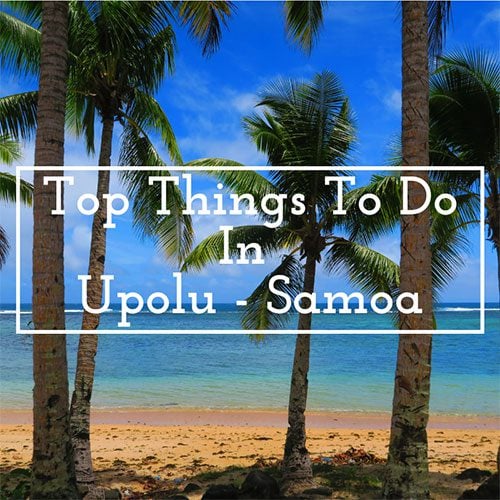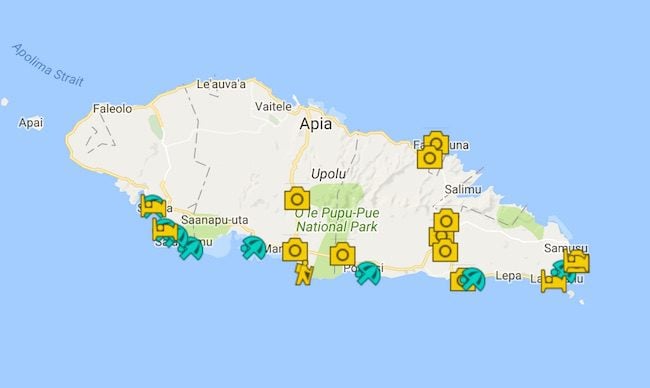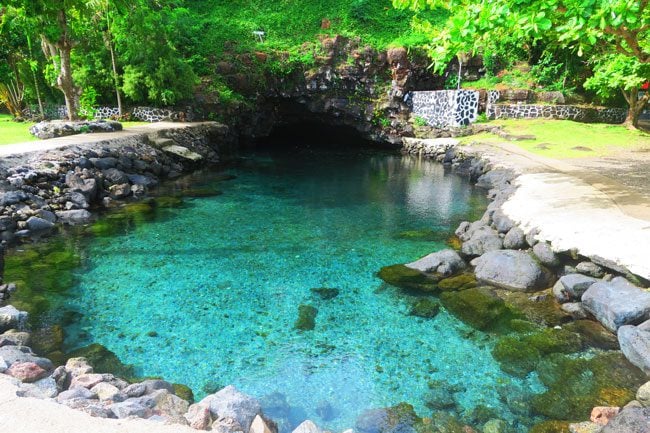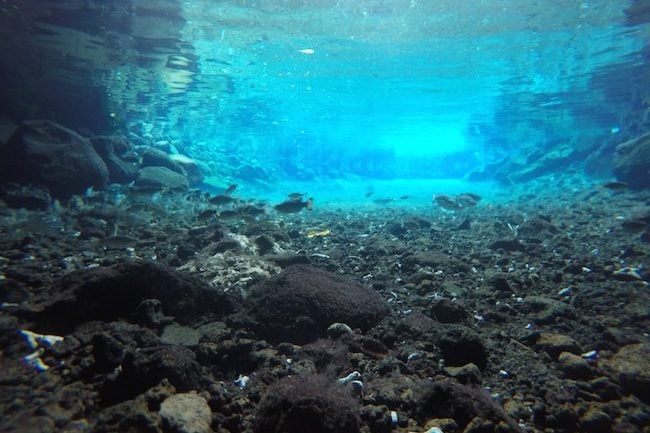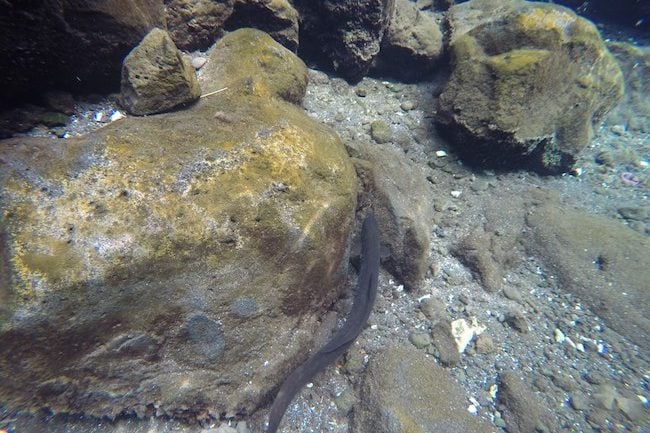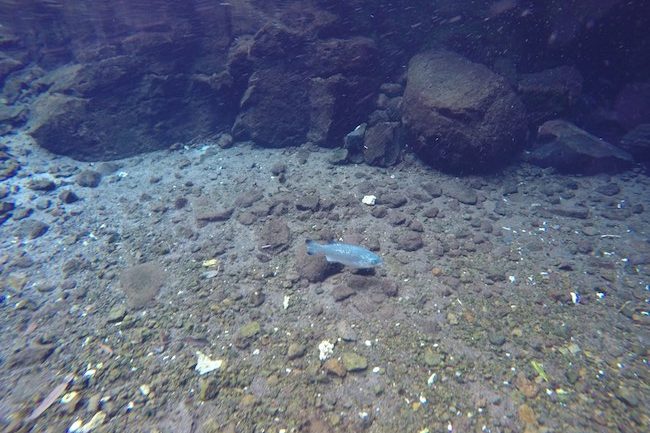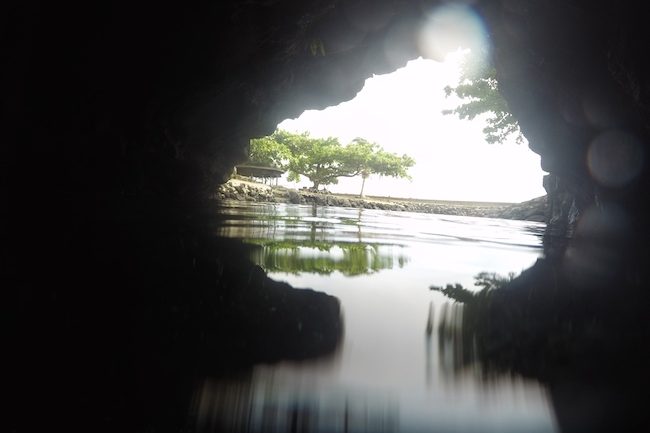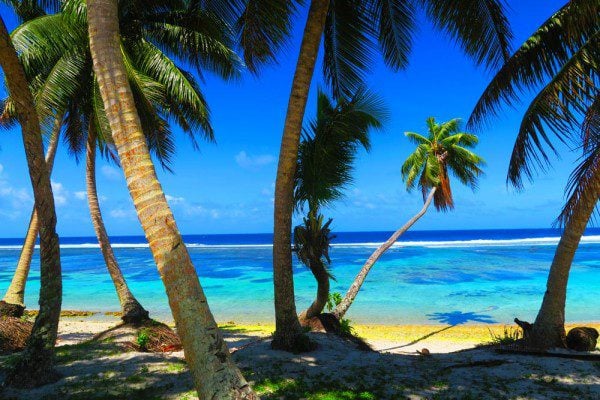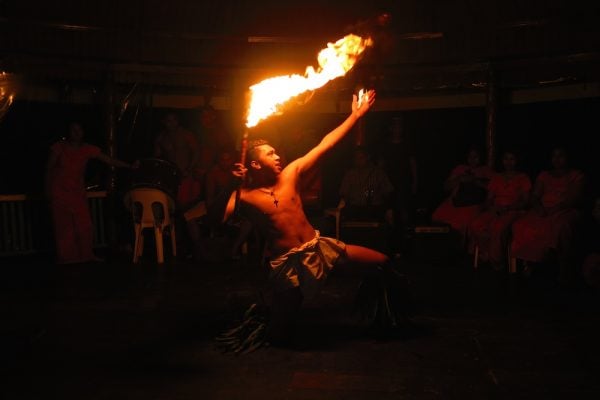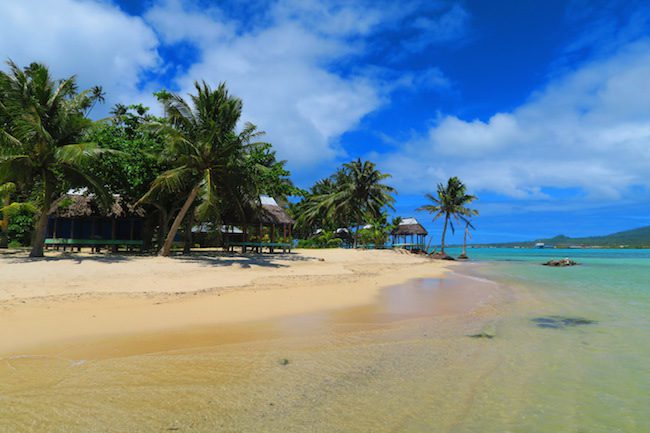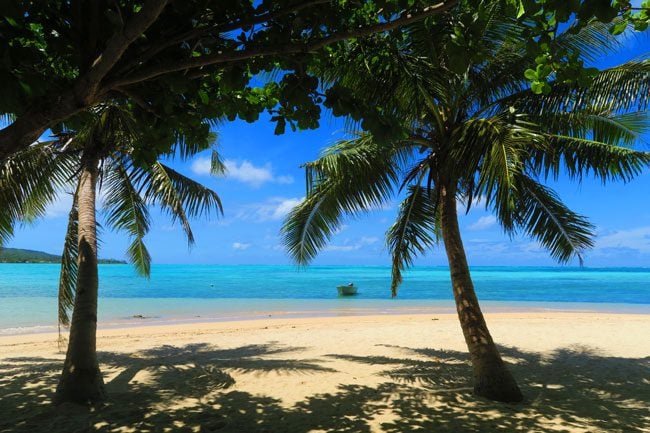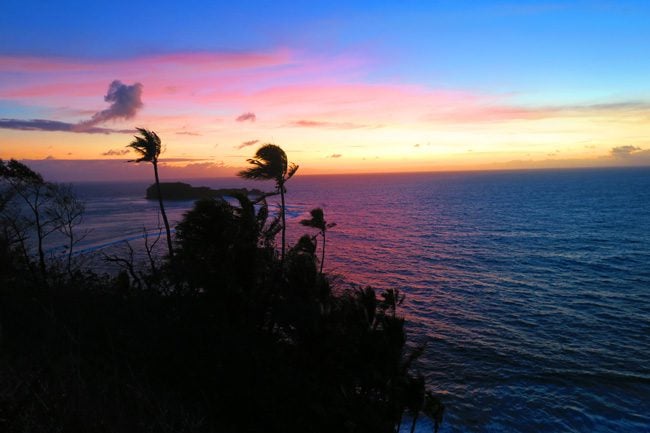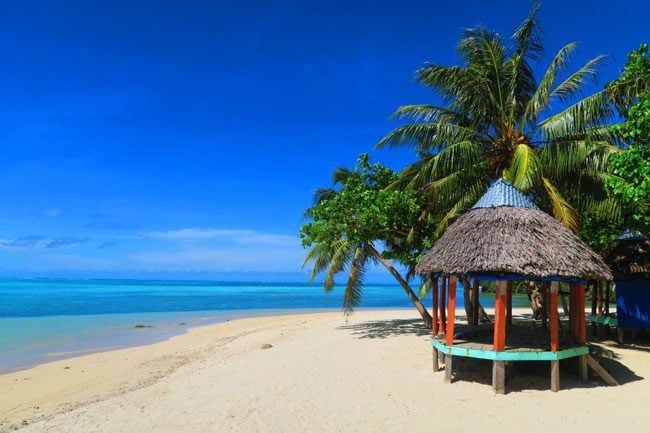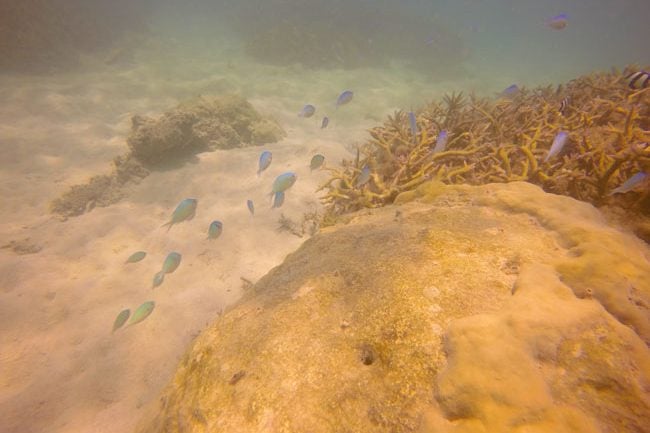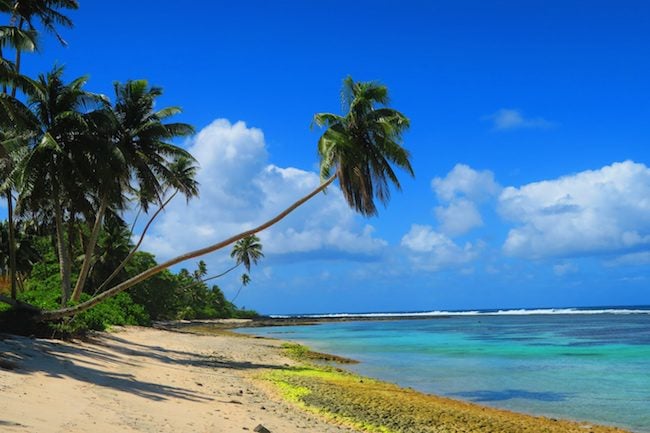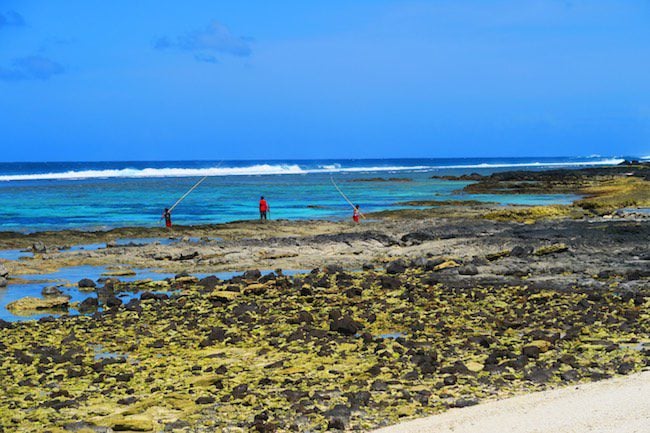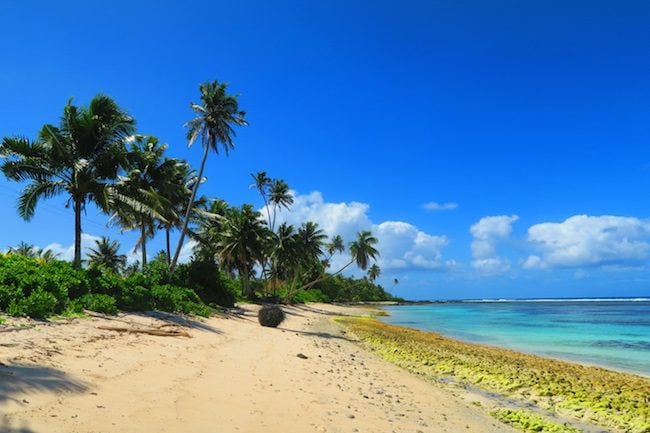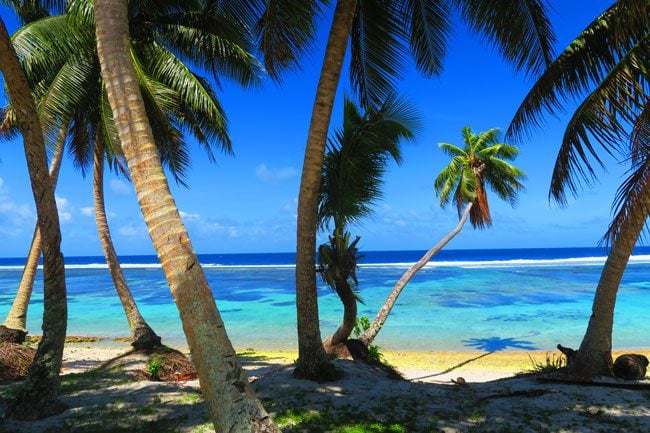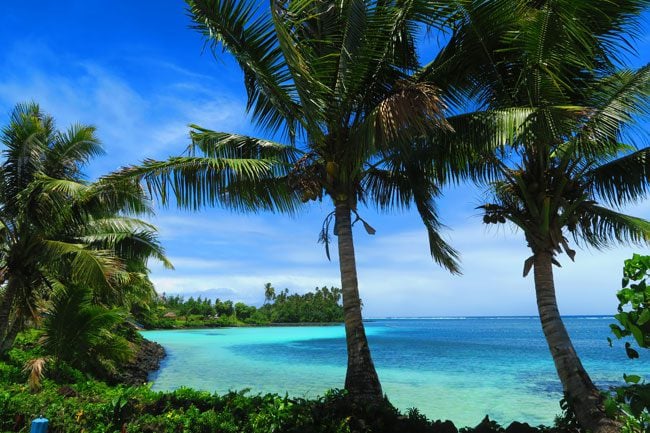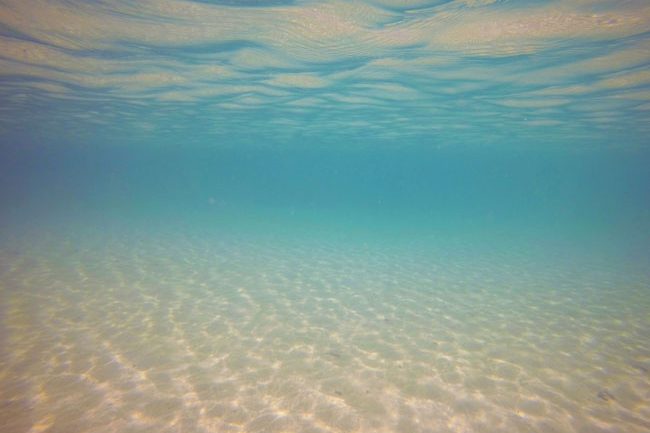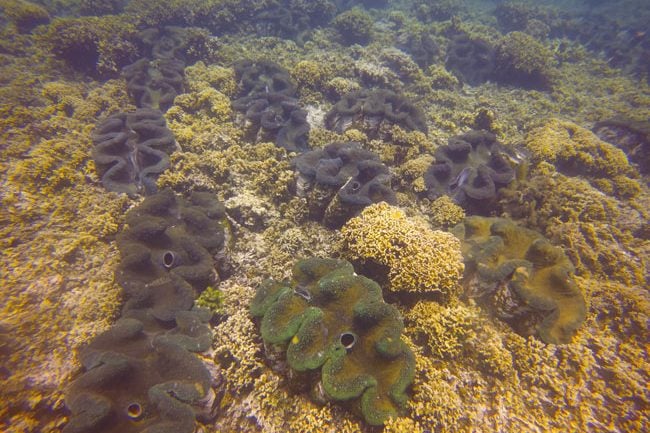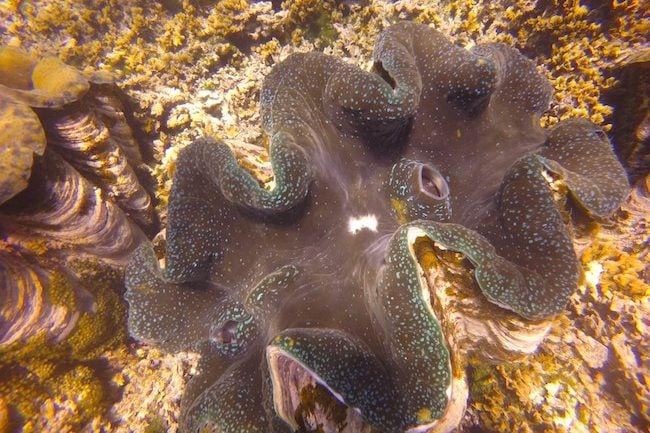Samoa Travel Guide
Upolu Travel Guide
Once you get out of Apia, Upolu’s roads are for the most part empty, rising to cloud-covered plateaus where waterfalls cascade from just above everywhere and where sleepy villages hug the beautiful coastline. Along the way, you’ll surely bump into groups of uniform-dressed children heading to and from school, always appearing to be so well behaved and carefree. In this section of the Samoa Travel Guide, we’ll cover all the small island’s top doable highlights that are outside of Apia.
Additional Upolu Resources
Upolu Travel Tips
- Recommended Reading: Tropical Beach Hopping In Samoa – a personal account of my visit to Upolu Island
- Most of Upolu’s highlights are on its eastern half – abundant with waterfalls and beaches. The island’s southwestern side, however, has its prettiest (and hardest to reach) beaches.
- The best way to explore Upolu is with a hired car (see ‘Samoa travel tips’ section), easily covering everything in 2-3 days in a tropical road trip.
- It is possible to explore the island by bus (and bicycle), keeping in mind that in Samoa it’s challenging to take the bus from one village to another without having to switch lines in Apia.
- The Southeastern coast was badly damaged in the 2009 tsunami, with the coral reef virtually destroyed. Don’t expect too much when it comes to snorkeling.
- Pick up some fruits & vegetables from Apia if you’re staying in the outer villages. Village shops only have dry packaged foods.
Upolu Travel Guide Map
Click on the image to open in Google Maps. This map features all the highlights mentioned in this section of the Samoa Travel Guide:
Where To Stay In Upolu Island
If you’re renting a car, it doesn’t matter all that much where you base yourself in Upolu, as the island is pretty small. If you’ll be using the bus to get around, you should probably pick a place to stay on either end of the south coast. Here are a number of personally tested recommended accommodations in Upolu Island, ranging from simple beach fales to beachfront resorts.
Things To Do And Places To See In Upolu
Let’s see what Samoa’s major island has to offer.
Upolu Northeast Coast
Vast sections of the island’s northeast coast are not accessible by bar aside from the highlights mentioned here which are on or around the main coastal road.
Piula Cave Pool
Wow wow wow. I came twice to this freshwater pool on the grounds of the Piula Methodist Theological College and here’s the deal: aim to come here early on a weekday morning. Why? With nobody around, you’ll be able to fully appreciate the absolute clarity of the water and its surprising marine life.
Created by an ancient lava tube, the pool is fed by rainwater trickling down from the highlands, yet it’s just a few meters away from the ocean. Don’t forget your mask and snorkel. Underwater, you’ll feel like an astronaut drifting in the illusional vacuum of the invisible water. There will be lots of fish around you and even eels – but don’t let that scare you! What should scare you is an attempt to locate the inner pool, which requires swimming underground with no signs pointing the way! The entrance is 5T and there are shower/toilet/changing facilities.
Here’s what it felt like to float in the cave pool.
Sauniatu Waterfall
It’s not the most impressive waterfall in Samoa, but it’s free to have a look at and it’s a wonderful spot for a picnic lunch. You’ll need to do a bit of off-roading to get here, about 7km of easy driving on a dirt road to the Mormon College. Along the way, you’ll drive in lush mountain scenery and pass a few off-the-grid settlements. Before you have that picnic, walk down the steps for a refreshing swim!
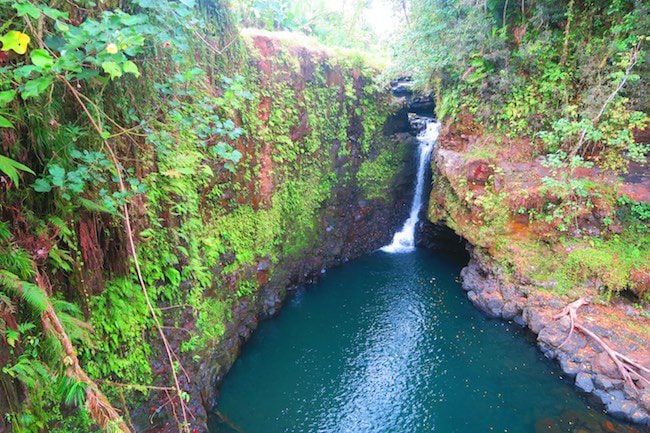
Upolu Interior
The interior part of Upolu Island in Samoa is mountainous in the ‘classic’ tropical island fashion. Cloud-covered peaks rise from the coastlines, with plenty of waterfalls and panoramic views to fill up your day when the weather is pleasant.
Le Mafa Pass
This scenic drive offers panoramic views of the Samoa you’ve vividly imagined in your mind. The rugged road snakes its way to the lush mountains from the north coast of the island, eventually descending to the south coast. En route, you’ll be rewarded with incredible views of the forested valley meeting the blue ocean. Unfortunately, the weather can change quickly along the drive, with the sunny and dry coastal weather quickly turning into the cloudy and wet weather of the mountains. You can’t have all this green without any rain – remember that!
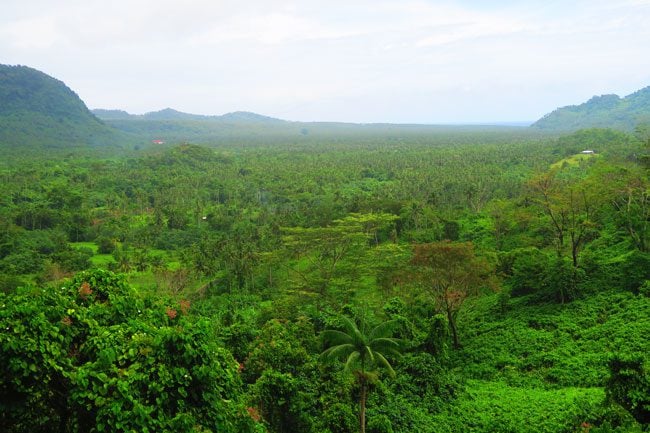
Papapapaitai Falls
The sign to the Papapapaitai Falls lookout is about halfway on the cross-island road. This 100-meter waterfall is the highest in Samoa and you’ll need to have some luck to fully appreciate it, as the gorge which the water cascades down to is a serious ‘cloud factory’. You’ll probably not be alone at the lookout spot, accompanied by colorful butterflies who also like to hang around here.
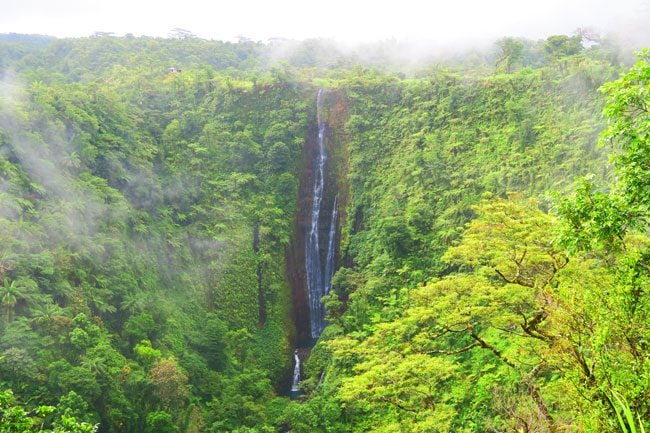
Fuipisia Waterfall
The T7 entrance fee is certainly worth the pay. Why? You can actually walk to the very top of this 55-meter high waterfall. Standing up here and hearing the thunder of the cascading water is an experience you’ll never forget. Though you’ll probably dream of splashing in the pool at that base of the waterfall, your only swimming option is upriver just before the water begins to tumble down.
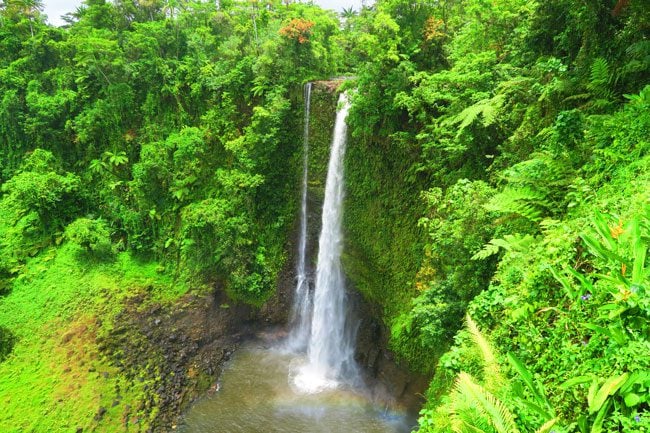
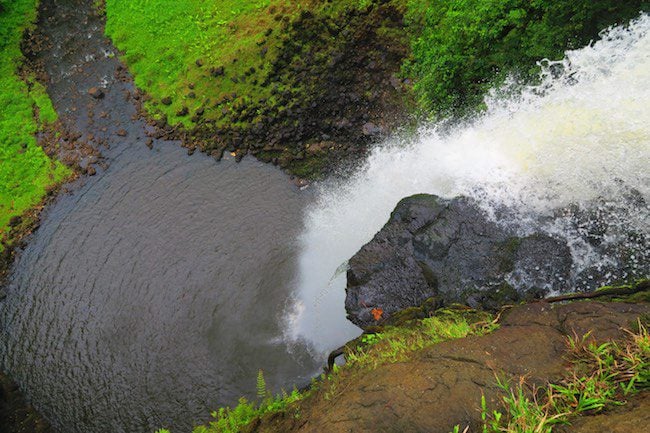
Sopoaga Waterfall
The Sopoaga Waterfall is probably the prettiest waterfall in Samoa. Maybe it’s the way in which the water splashes from one pool to another, maybe it’s the secluded forest which hides this wonder, maybe it’s the birds so happily singing – or maybe just all three! This is an absolute postcard. The family that owns the lookout spot also cultivates a small tropical garden with Samoan plants and trees neatly labeled for your educational pleasure. The entrance is 5T.
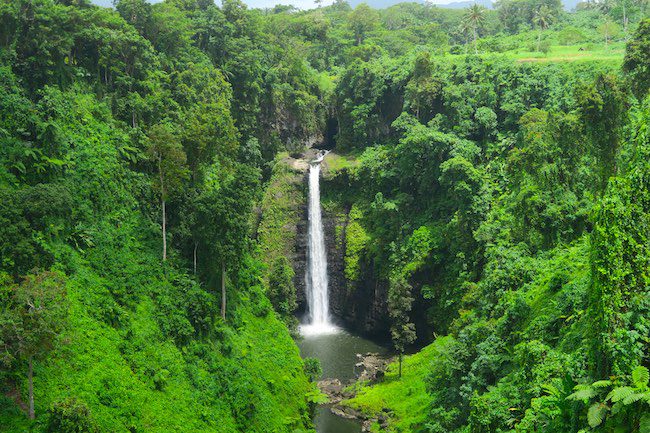
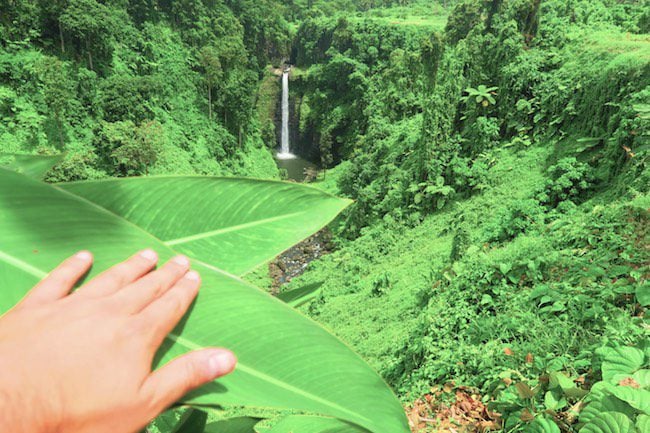
Upolu South Coast
The south coast is the best place to base yourself. The coastline is home to Samoa’s finest beaches, resorts, beach fales, and natural wonders. All highlights are on or around the main coastal road, with the westernmost beaches requiring a bit of off-roading to get to.
To Sua Ocean Trench
You can’t say you’ve been to Samoa until you’ve visited the To Sua Ocean Trench. This natural wonder serves as Samoa’s ‘ambassador’ in travel magazines and lists of places to visit before you die. The trench is formed by two giant holes connected by a lava tube. The close proximity to the ocean just meters away fills one of the holes, creating the signature swimming spot. Part of the fun is overcoming your fear of heights and stepping down the ladder to the swimming platform.
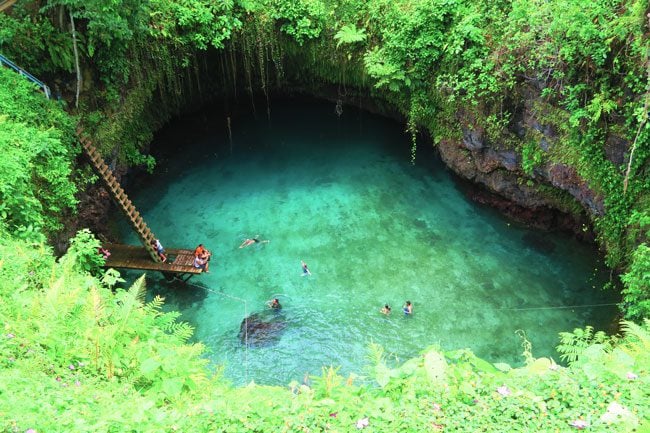
Once you’ve made the brave decent, it’s nothing but paradise. You’ll float in the saltwater pool with water trickling down from mossy ferns growing on the rocky walls. As you get close to the ocean side of the pool, you’ll feel the current pushing you out and sucking you in, a reminder of how the pool is naturally fed.
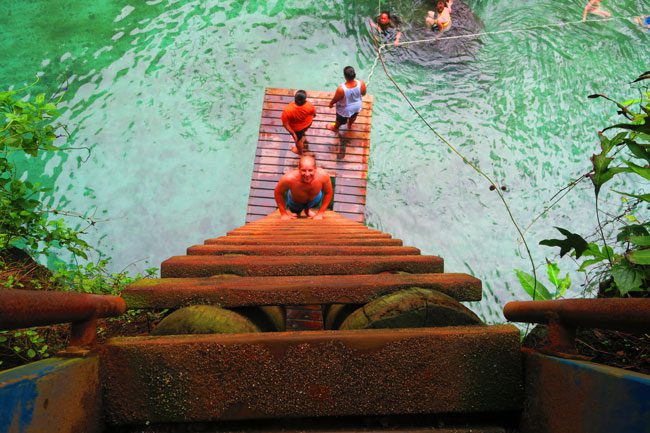
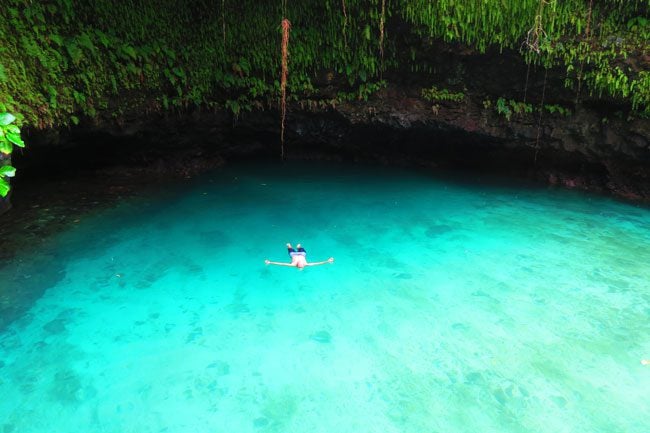
When you’ve somehow managed to pull yourself away, check out the nearby sea cliffs, lava tubes, and natural rock pools. During low tide, you can walk around and experience the wild coastline of this part of Upolu. The site also features a picnic area and fales that can be rented out for the day. The entrance is T20.
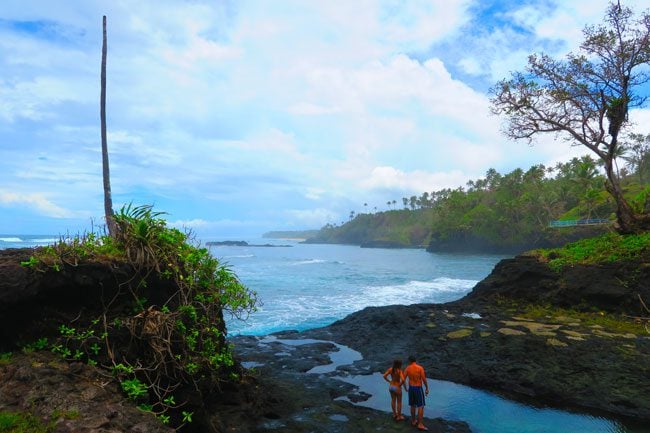
Vava’u and Vaiula Beaches
After Lalomanu Beach, these two are the best beaches on the eastern half of the south coast. I found the T20 entrance fee at Vavau Beach to be a bit of a ripoff, while Vaiula Beach was pretty, quipped with simple beach fales but nonetheless nothing out of the ordinary.
Lalomanu Beach
The most photographed beach in Samoa is also considered to be one of the prettiest tropical beaches in the world. In Lalomanu, the palm trees perfectly bend, the white sand melts between your toes and the uninhabited Nu’utele Island provides the perfect backdrop. The beach is home to a number of family-owned beach fales, from the super basic to the swanky. It’s a magnet for backpackers, young couples, and even Samoans over the weekend. It’s also a great place to catch a traditional Samoan dance show and impressive fire dancing. Have a look at the recommended Upolu accommodations for some ideas on where to stay in Lalomanu Beach.
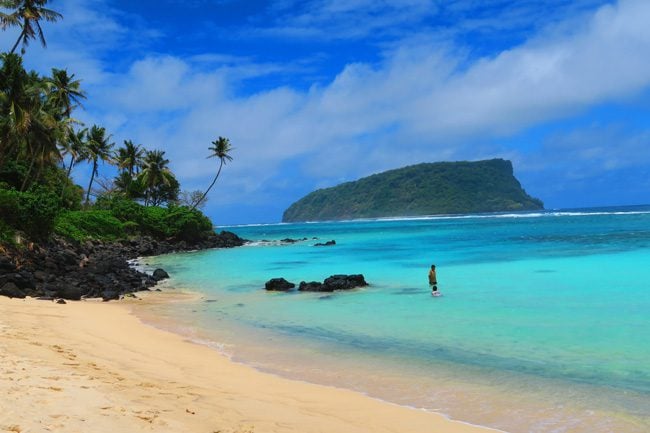
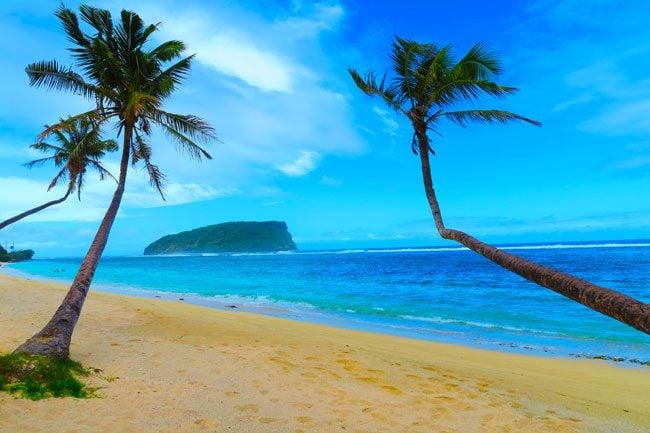
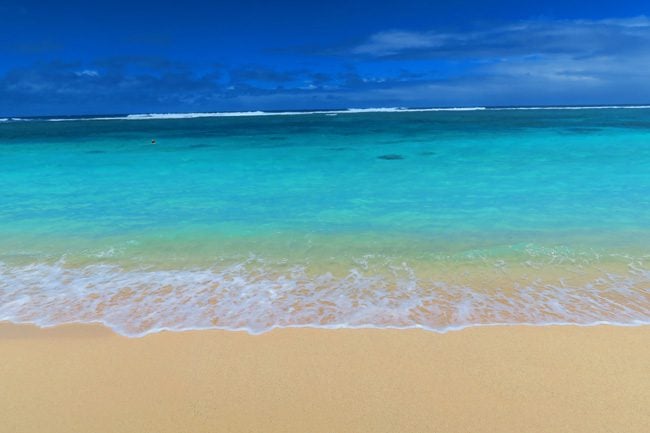
This area of Upolu was badly damaged by the 2009 tsunami caused by an 8.1 magnitude earthquake. Some villages have better recovered than others, but the reef is still in bad shape. So even though the water is magnificently aqua blue, do not expect much in terms of snorkeling. You can visit the beach free of charge, or use the beach fale facilities for a charge (you can also buy food from the fales or from the local food shop). The bus from Apia takes about 2 hours and will cost only T7.
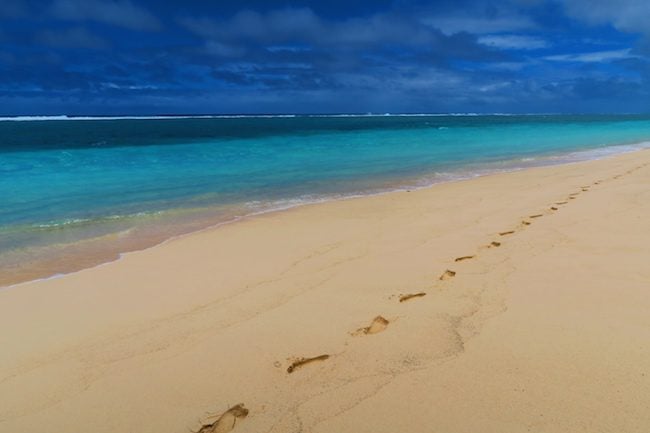
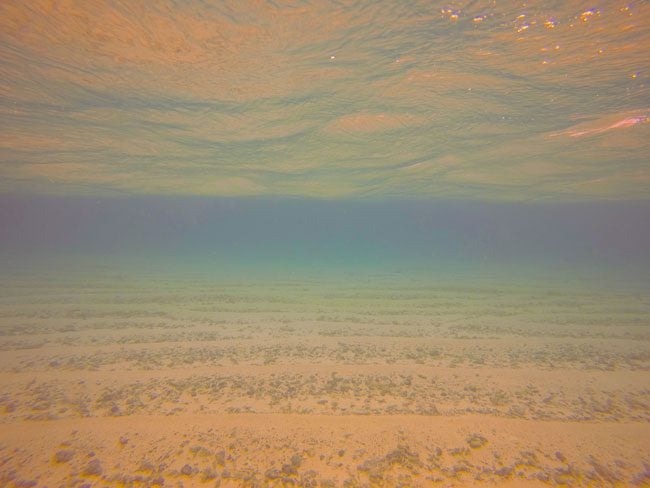
Namua Island
While Lalomanu Beach is extraordinarily pretty if you really want to get off the grid, head to Namua Island. To visit the island on a day trip (~T40, T55 including lunch) or to stay overnight, contact the family that runs Namua Island Beach Fales (+685 7501231 | 7588209).
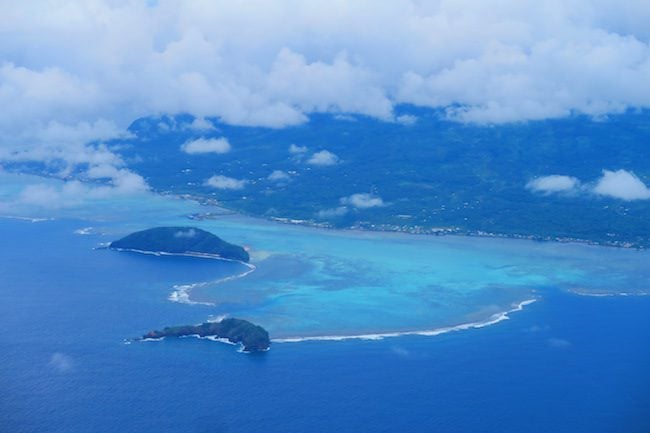
The island lies just a short distance from Upolu, but it’s a whole other dimension out here. Activities include: relaxing on the beach, snorkeling, hiking to the top for sunrise or for daytime views, circling the island on foot during low tide, and counting the stars at night.
I would recommend staying here for at least one night to really get the relaxing feel of the place. If you’ll just come for the day to lie on the beach, I’m not really sure it’s worth the effort. I spent two nights in Namua Island and it was one of the most memorable experiences of my visit to Samoa.
Togitogiga Waterfall
Part of a recreation reserve that’s free to enter, a path through a lush tropical garden will lead you to a series of cascading pools that are perfect for swimming. In fact, legend has it that this was the favorite bathing spot for Samoan warriors back in the day. Aim to come here during a weekday, as on weekends many Samoan families crowd this place with family BBQs.
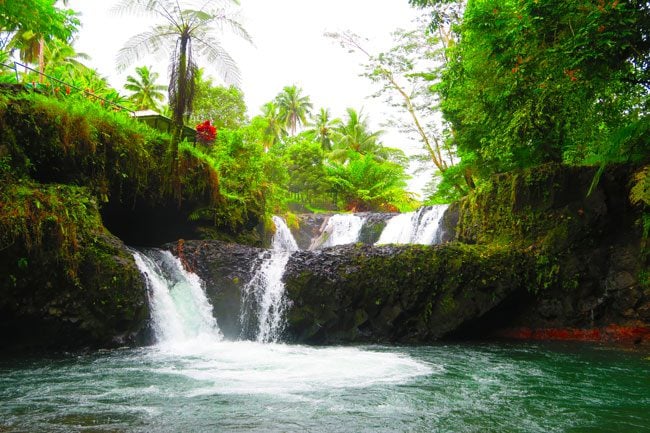
Ma Tree Walk
I’ve seen my fair share of tropical chestnut trees in French Polynesia, but this tree was totally out of this world. On the main road opposite the ocean, look for the sign to the Ma Tree Walk. An easy-going 15-minute walk through the tropical rainforest will bring you to the base of this beast. Its roots spiral out in every direction above ground, swallowing everything in their path. In French Polynesia, this is called a mape tree, and it will blow your mind! This is a very quick stop, definitely worthwhile if you’re driving along the southern coastal road.
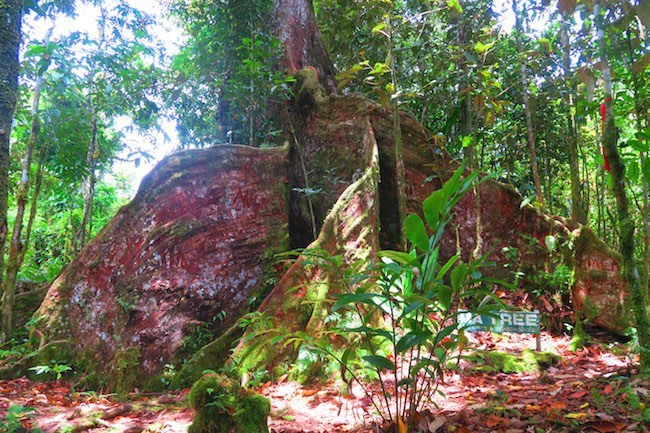
Coastal Walk
Pretty much opposite to the Ma Tree Walk, you’ll see a signposted dirt track heading in the direction of the ocean. The Coastal Walk is part of a national park, taking you along sea cliffs to an open lava field. The walk will take about an hour if you started from the car park. Wear a hat and bring plenty of water.
Aganoa Black Sand Beach
If you won’t be heading to Tahiti, this is your chance to see a black sand beach in Samoa. The only catch? You’ll need a 4WD to traverse the rough road which leads to the Aganoa Black Sand Beach (T10 entrance). The beach is also a prime spot for surfing in Samoa.
Salamumu Beach
A dirt track leads from the southern coastal road to beautiful Salamumu Beach. It’s at its prettiest at the Sa’Moana Resort, where white sand meets basaltic cliffs, but before you reach it you’ll pass a deserted beach only frequented by occasional local fishermen.
There is a T10 entrance fee that’s payable if someone is actually manning the booth up at the turnoff from the main road.
Matareva Beach
Another dirt track will take you from the road down to a series of tropical beaches, the last of which is Matareva Beach (T10 per car, T2 per bicycle). Along the way, you’ll drive (or cycle) past endless coconut plantations where locals are busy collecting the ripe ones for copra production.
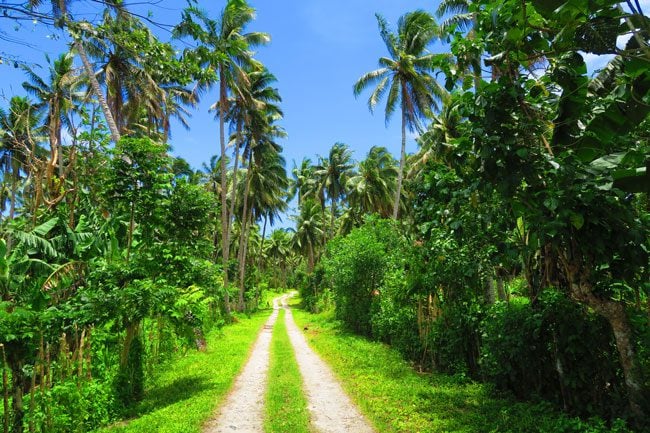
Eventually, you reach a beautiful and secluded lagoon. There’s hardly anyone around here on a weekday. You can easily find your own patch of white sand and go for a swim in the warm waters. When the tide is rolling in, the swimming is a bit rough and snorkeling is not really all that possible.
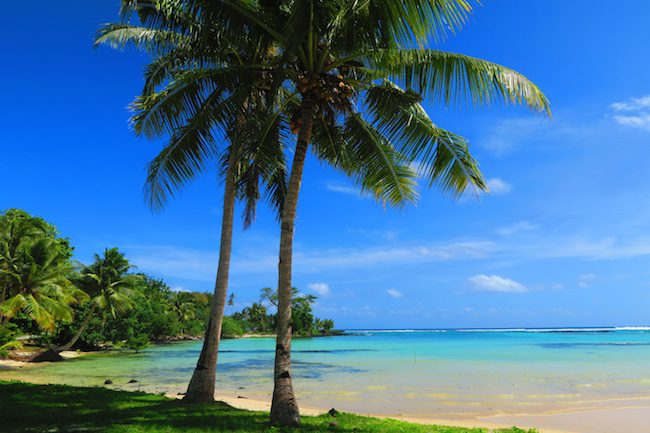
The last beach on the dirt road is Matareva Beach – absolutely stunning! Sheltered by the sweeping cove, the beach is more like a giant swimming pool so even if the sea is a bit rough, you can still enjoy a nice dip. Matareva Beach Fales offers simple accommodations in the middle of nowhere or just a place to buy something to eat and a cold beer!
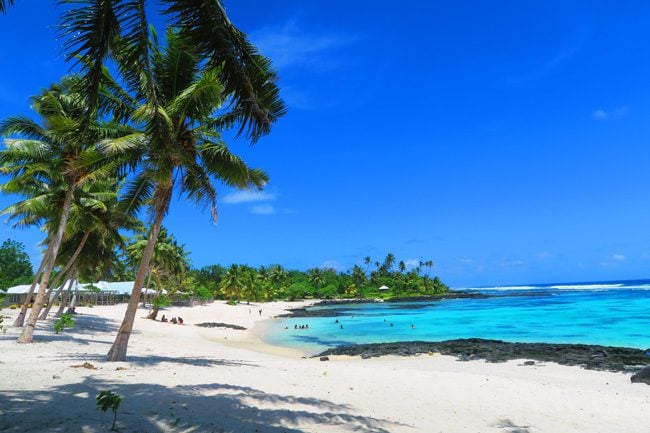
Return To Paradise Beach
The filming location for the 1953 hot movie of the same name, the Return to Paradise beach is another stunning beach in a section of Upolu blessed with so many. The best section of the beach is at the Return to Paradise Resort, where a T25 entry ticket is redeemable at the gazebo bar overlooking the beach. It’s a magical spot to catch up on some holiday reading, or just finally hear those relaxing ocean sounds from the YouTube video made for depressed office workers – only that in this case, it’s absolutely real! Swimming, on the other hand, is a bit too rough, so don’t venture too far away from the beach.
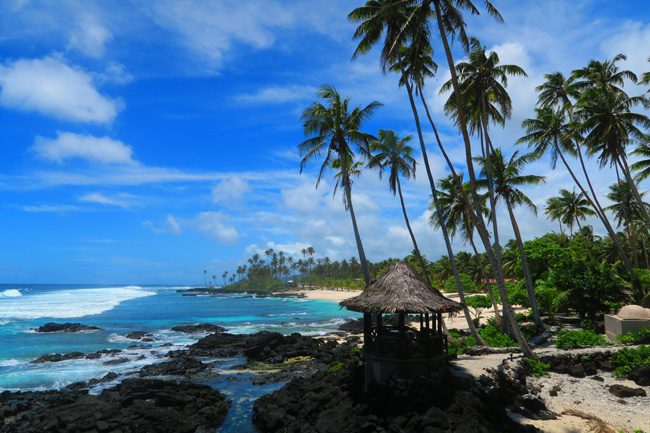
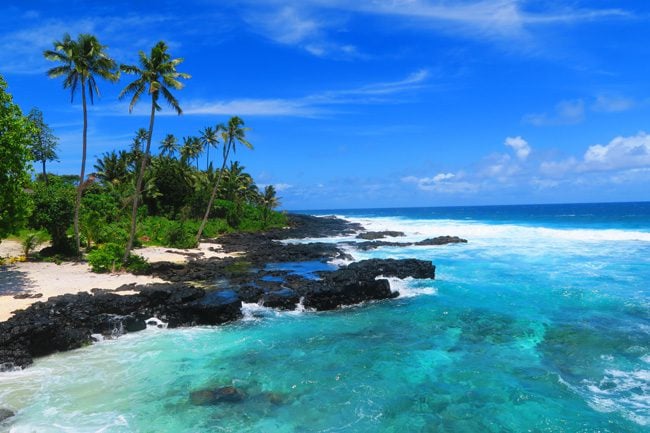
Giant Clam Sanctuary
Savaia Village sits at the mouth of beautiful Lefaga Bay, home to the Giant Clam Sanctuary. Pay the T5 fee at Le Valasi’s Beach Fales (an amazing place to spend a few nights at) and head underwater to see the colorful clams. They were brought over from Tonga many years ago and you’ll find them decorating the homes of locals. Their meat is highly sought after by customers in Australia and New Zealand, but not the clams over here. Part of a marine sanctuary, these giant clams are protected by a ring of buoys and local villagers. Keep your eyes peeled as you cruise underwater, as these guys open and shut faster than you can say ‘Clint Eastwood’.
